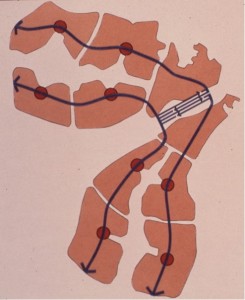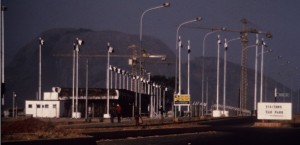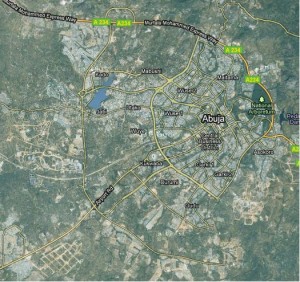I must have been offered at least a dozen credit cards in the past week, each one an opportunity to spend on clothes, electronic toys, food, travel, and other items for consumption. Each of the financial institutions hoping to attract my business was also hoping, I imagine, that I might by choice or chance not pay their bills in full and thereby convert my debt to a longer-term and high-yielding asset on their books. I would be bound, according to terms typical of the offers, to pay interest on my unpaid balance at rates significantly above 10% annually, 5 to 10 times what the banks would pay me to lend them money by purchasing a certificate of deposit.
While I am certainly annoyed by the steady barrage of credit-card offers, particularly within the context of my recent memories of financial meltdown, mortgage crisis, and federal debt-limit bickering, my deeper concern is why are there no attractve offers to buy into my city’s or state’s or nation’s infrastructure. With aging bridges and pavements, bursting water mains, and straining levees almost everywhere apparent in this country, the demand for infrastructure investment should be booming. Meeting that demand—whether through private initiative or government action—would not only create immediate jobs in materials, construction, and facilities management, but also provide the services to support sustained growth in the economic sectors that depend on efficient transportation, clean water supply, and flood-free operations.  Can we create ways to make infrastructure investment—a good thing—as attractive and painless as—a bad thing—going deeper into consumer debt?
I think we can. Here’s one idea.
Suppose a state government joined with an appropriate team of banks, utility companies, and local authorities, that is, form a serious public-private partnership. (PPP)  The PPP would begin by marketing an affinity-branded credit card and matching debit card. The attraction for consumers using the cards would be a credit—say 3 to 5 percent of all purchases—to be applied against current infrastructure services (for example, transit fares; water, electric power, and natural gas fees; tolls and or parking fees), property and real estate transaction taxes, or purchase of tax-advantaged bonds issued by the government members of the PPP. The bonds could be of the zero-coupon variety, to reduce the need for current cash flow and to encourage longer-term consumer saving. Employers and utilities could use the card to store transit credits and demand-management incentives for employees and customers.
The cards’ branding could celebrate the social as well as physical infrastructure of the target market region. Card-holders would receive their credits only by using the card to pay for infrastructure services and taxes (or by investing in bonds), accelerating the trend toward reducing cash processing costs and revenue leakage. The bankers gain access to a large population for associated marketing and data mining. There seem to me to be a lot of winners in this scheme.
Feasibility seems proven.  Affinity cards and employee-benefit debit cards are well developed, of course. There are rudimentary versions of what I am imagining in use, such as multi-system transit fare cards (Washington’s SmarTrip and Baltimore’s CharmCard), the E-ZPass highway toll-collection system, and the services offered by Toronto-based Skymeter. While we are not likely to change from a consumption-driven economy, perhaps we can channel some of the consumption painlessly in savings, investment, and a sustainable infrastructure.




